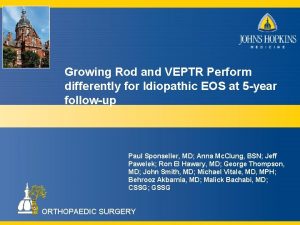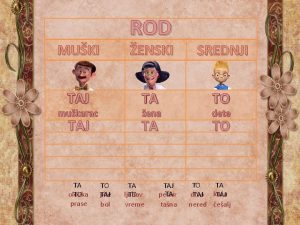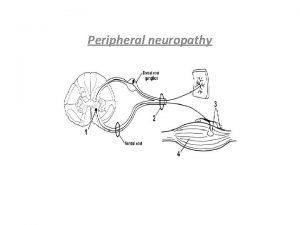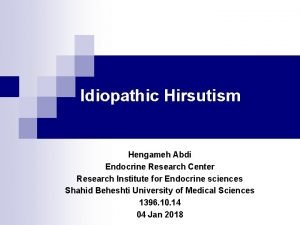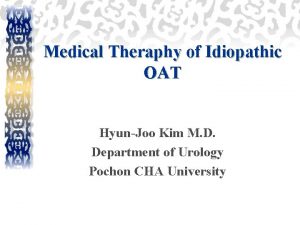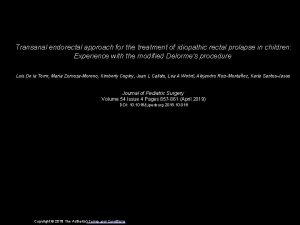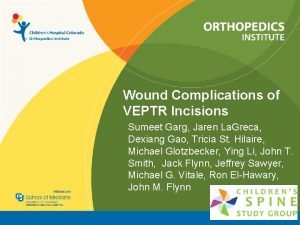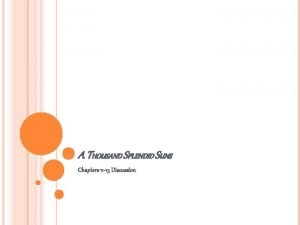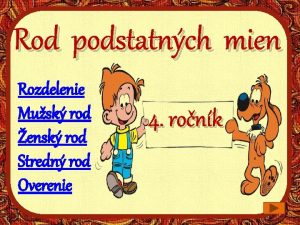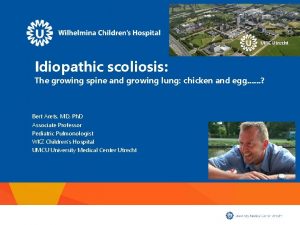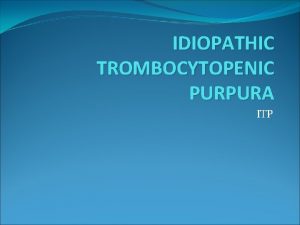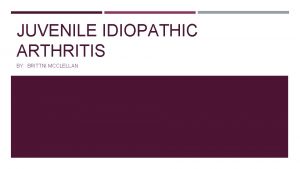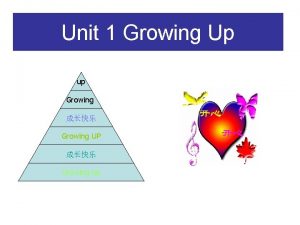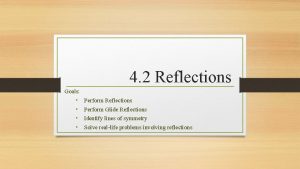Growing Rod and VEPTR Perform differently for Idiopathic












- Slides: 12

Growing Rod and VEPTR Perform differently for Idiopathic EOS at 5 -year follow-up Paul Sponseller, MD; Anna Mc. Clung, BSN; Jeff Pawelek; Ron El Hawary, MD; George Thompson, MD; John Smith, MD; Michael Vitale, MD, MPH; Behrooz Akbarnia, MD; Malick Bachabi, MD; CSSG; GSSG ORTHOPAEDIC SURGERY

Introduction • While VEPTR uniquely suited for rib deformities • IEOS has been treated with VEPTR or GR

PURPOSE Compare outcomes for matched cohorts of patients undergoing distraction for IEOS GR and VEPTR Hypothesis: • Two systems will produce varying amounts of thoracic height gains and curve correction • Complications are treatment specific ORTHOPAEDIC SURGERY

STUDY DESIGN GSSG and CSSG databases used to identify: GR and VEPTR patients idiopathic etiologies Included syrinx, Chiari minimum 5 -year follow up ≥ 4 lengthenings Compared pre-operative, immediate post-operative, and most recent visit prior to final treatment

GR Pre-op vs FFU PREOP Case #1 Case #2 Case #3 Case #5

VEPTR Pre-op vs FFU PREOP Case #6 Case #7 Case #8 Case #9

RESULTS TABLE I: Demographic and Surgical Data GR VEPTR P value Number 50 22 0. 318 Age 5. 5 4. 3 0. 044 Years of follow up 8. 3 7. 7 0. 566 Number of lengthenings 8. 5 9. 8 0. 188 Number of surgeries 9. 6 14. 8 <0. 001

Radiographic Data GR VEPTR P value Pre Cobb 77. 6 74. 3 0. 388 Post Cobb 38. 3 53. 3 <0. 001 Pre-Post % Cobb 50. 0% 27. 3% <0. 001 Pre Final T 1 S 1 351. 4 314. 6 0. 003 Change T 1 S 1 96 76 0. 04 Pre Final T 1 T 12 219. 3 188. 7 0. 004 Post Kyphosis 38. 2 40 0. 748

TABLE III: Complications Data GR VEPTR P value Complication (Incidence) 1. 8 2 0. 296 Implant Comp (Incidence) 1. 3 1. 4 0. 413 Wound Comp (incidence) 0. 3 0. 5 0. 017 Medical Comp (incidence) 0. 2 0. 1 0. 415

Bilateral vs Unilateral • Bilateral constructs (VEPTR & GR) maintained better curve correction when compared to unilateral constructs. • Bilateral VEPTR constructs had 27% more wound complications than unilateral constructs. • Bilateral GR constructs experienced fewer wound complications than dual rod constructs.

Conclusion • Compared to VEPTR, GR patients had significantly greater initial correction of their main curves and maintained this correction at latest follow-up • -showed greater continued growth of thoracic height during the lengthening period • GR patients had a lower incidence of wound related complications.

THANK YOU ORTHOPAEDIC SURGERY
 Veptr growing rods
Veptr growing rods Srednji rod imenice
Srednji rod imenice Idiopathic peripheral neuropathy
Idiopathic peripheral neuropathy Idiopathic hirsutism
Idiopathic hirsutism Idiopathic oat
Idiopathic oat Pediatric surgery
Pediatric surgery Sumeet garg
Sumeet garg Chapter 14 a thousand splendid suns
Chapter 14 a thousand splendid suns Grandpa eyes
Grandpa eyes Why do irr and npv rank the two projects differently?
Why do irr and npv rank the two projects differently? Boys and girls learn differently
Boys and girls learn differently Words that are spelled the same but pronounced differently
Words that are spelled the same but pronounced differently Different properties of light
Different properties of light
